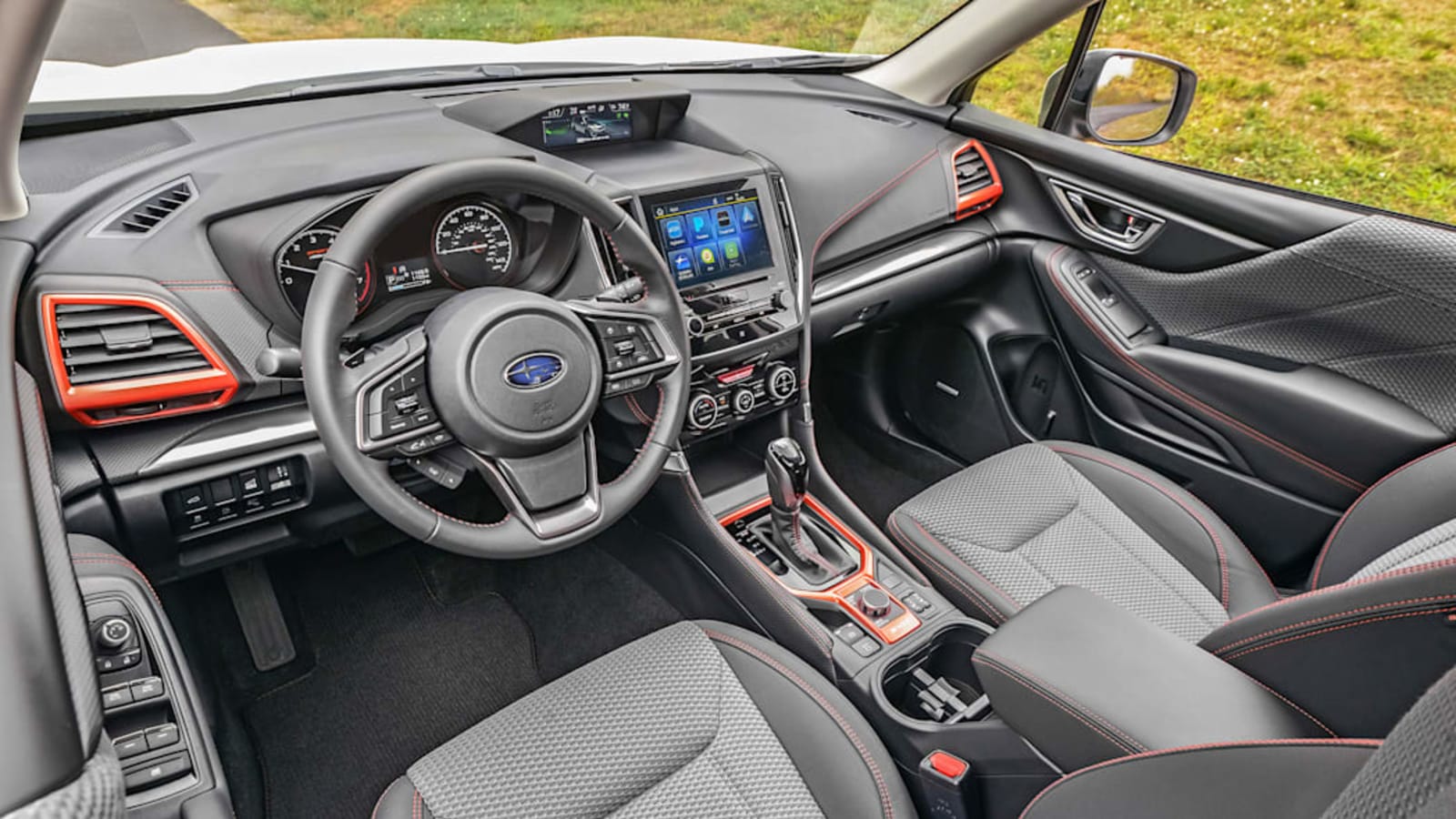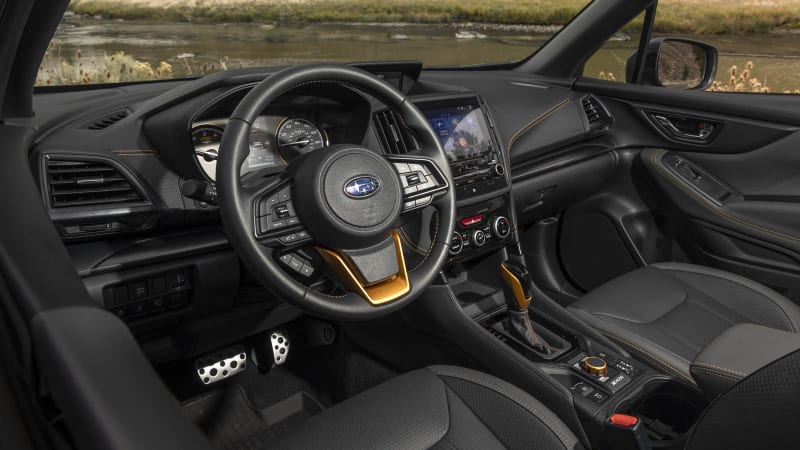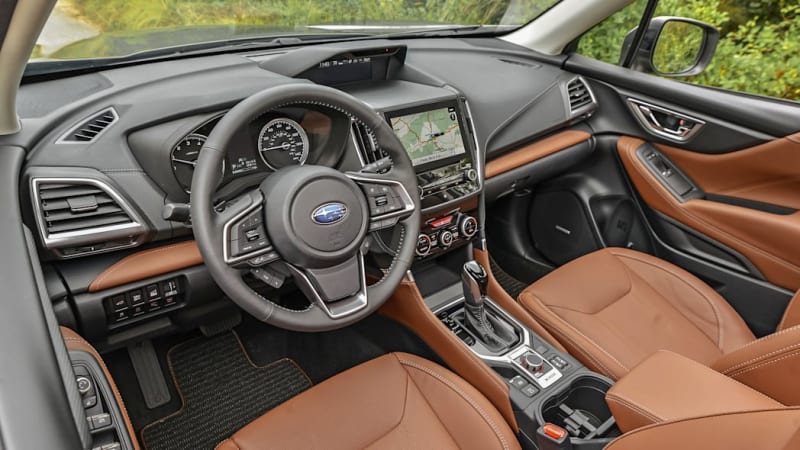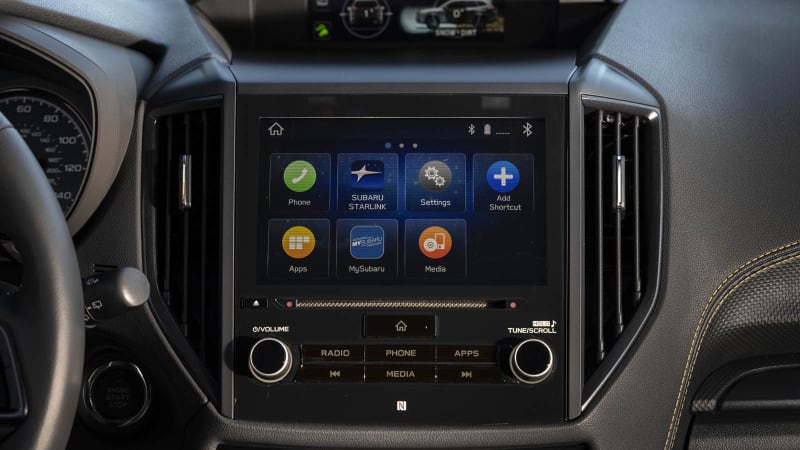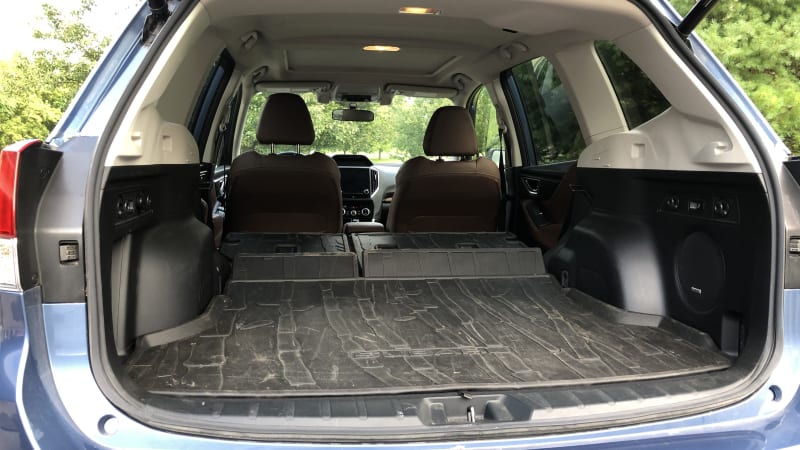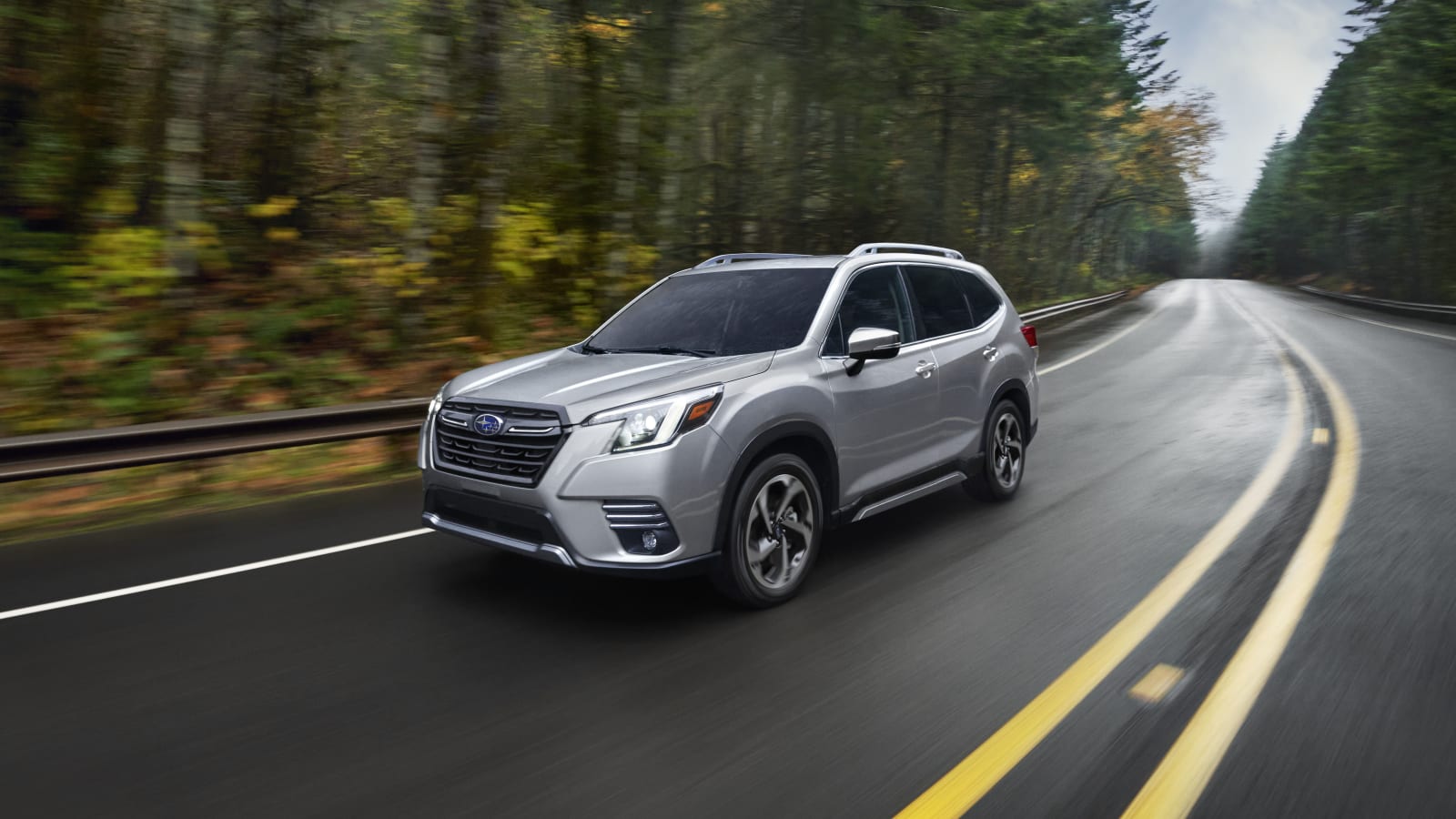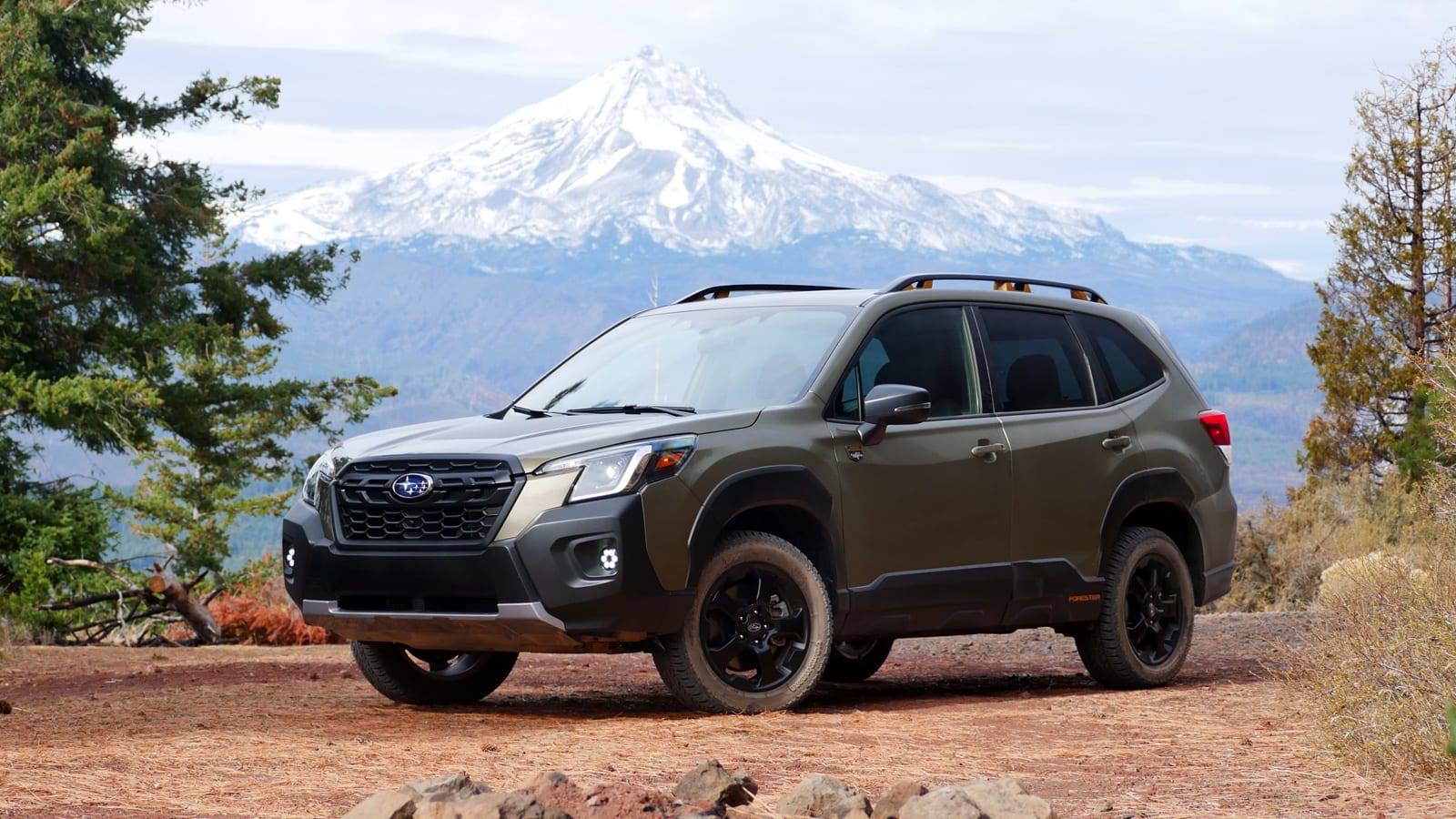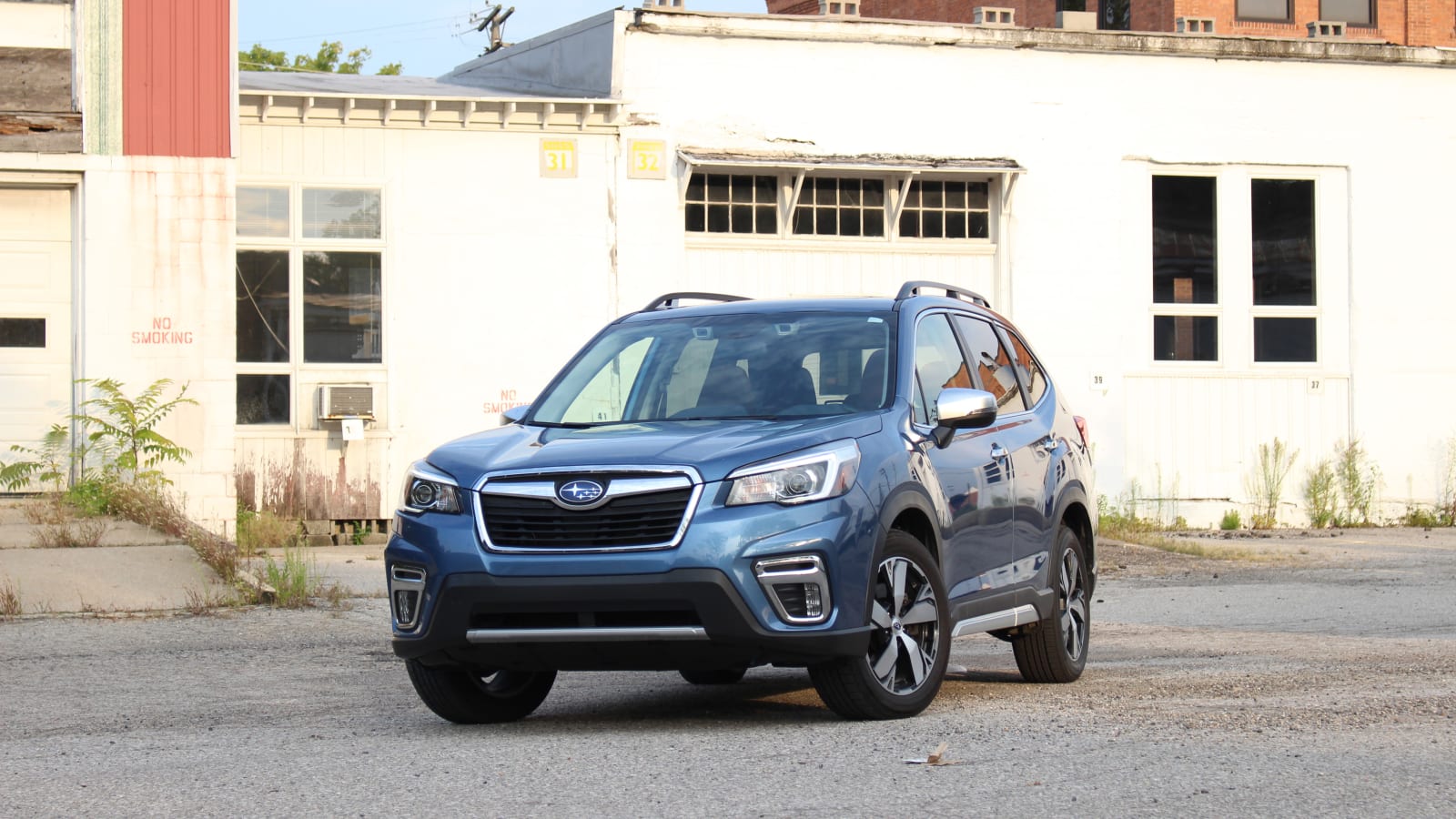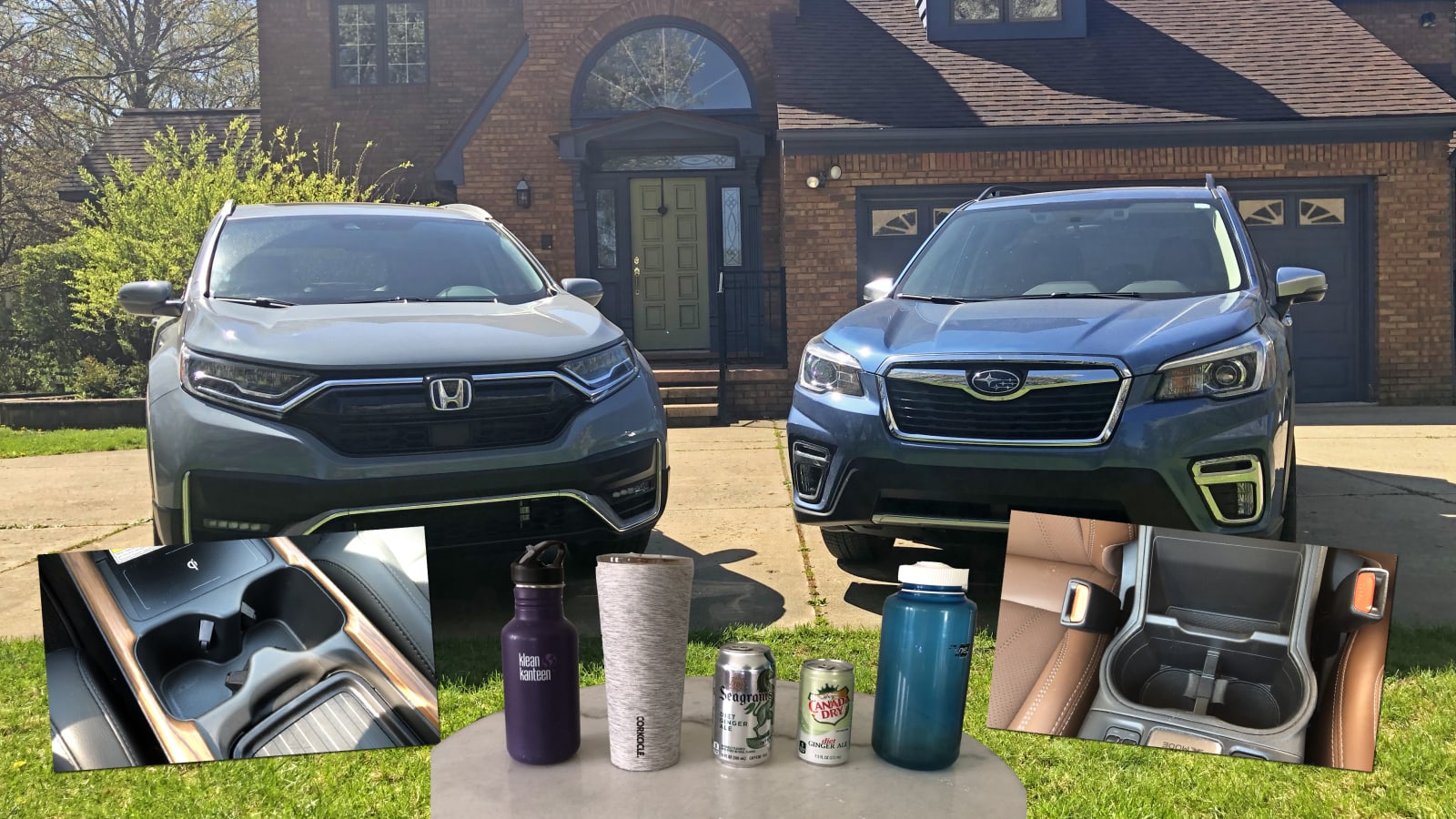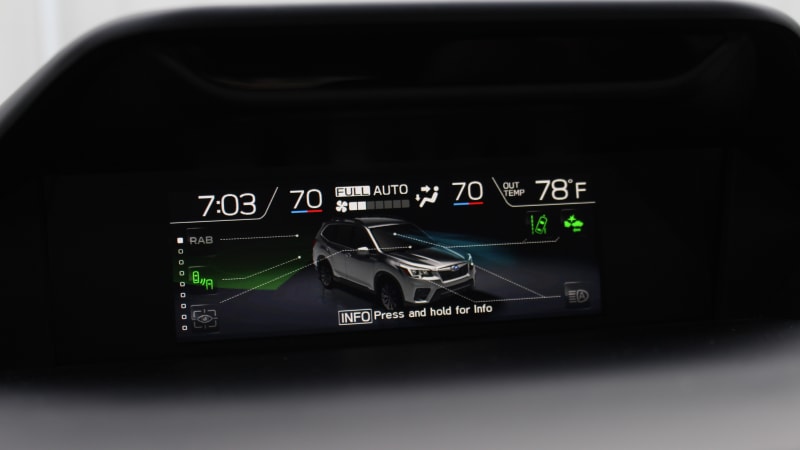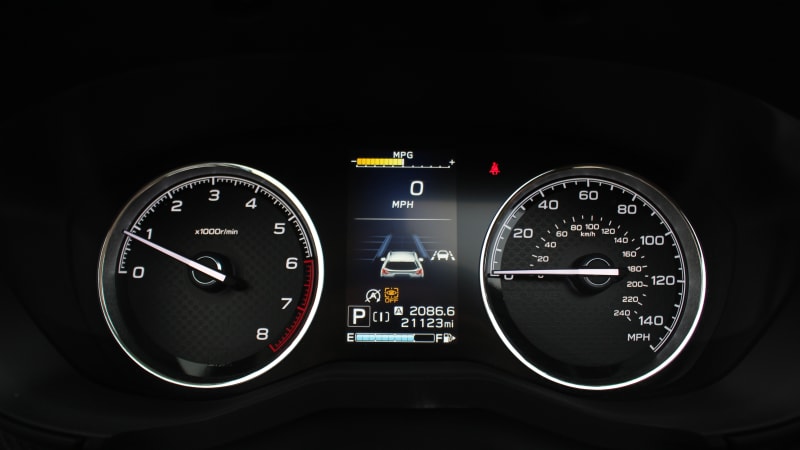Most compact SUVs are marketed in a way that encourages you to envision fun family outings spent taking advantage of their all-wheel drive and enhanced practicality in the great outdoors. Let’s face it, though: relatively few families will actually do that, and some compact SUVs frankly wouldn’t be very good at it. The 2022 Subaru Forester is the real deal, though, and its owners are far more likely to actually live the life the owners of other SUVs only envision. The outdoorsy set is still a minority, mind you, but the Forester’s standard all-wheel drive, class-leading ground clearance, ample cargo capacity, sturdy roof rails and relatively simple interior does indeed make it well suited for their adventures.
It’s with all of the above in mind that Subaru leans in for 2022 with the new Forester Wilderness, pictured above. As we describe in its specific review, its multiple upgrades provide a genuine increase in capability off the beaten path. It’s not just some quasi-rugged appearance package. We also like that it’s a mid-grade trim rather than a range-topper, making it more accessible to more buyers. The Wilderness gives the Forester an even clearer leg-up in a specific area (the outdoorsy realm), which is key, since the regular Forester is otherwise a mid-pack player in the segment, hampered by an underwhelming engine, ho-hum design and the simple fact that rivals like the Honda CR-V, Toyota RAV4, Nissan Rogue and Mazda CX-5 are just so strong.
Interior & technology | Passenger & cargo space | Performance & fuel economy
What it’s like to drive | Pricing & features | Crash ratings & safety features
What’s new for 2022?
The new Wilderness gets 9.2 inches of ground clearance (versus 8.7) via a lengthened and overhauled suspension; unique front-end styling including hexagon LED foglights and a reshaped bumper for an even better approach angle and greater protection; 17-inch black wheels wrapped in all-terrain tires; a full-size matching spare; changes to the CVT and differential for improved response off-road; copper-colored trim accents; and sturdier roof rails.
Besides the Wilderness, the rest of the Forester lineup gets a significant refresh for 2022. All models get a redesigned front bumper, grille and headlights, plus a new rear bumper. Inside, the cargo area gets standard LED lighting and two roof-mounted cargo hooks. Functionally, the brake system is upgraded on all Foresters, while the Premium trim gains the more powerful brakes of higher trims. There’s also another windshield washer nozzle added, which should be good news in the crummy-weather climates where Foresters are frequently sold. Finally, the latest-generation Subaru EyeSight system is fitted, and now includes automatic emergency steering and an upgraded camera. The available Driver Focus system also now makes it possible to change the HVAC temp setting with a hand gesture.
What are the Forester interior and in-car technology like?
The Forester’s interior design is function-first, with a sensible control layout and visibility that rivals the Popemobile. The materials are of a good quality, and driving for hours on rutted dirt roads proves it’s all put together well. But don’t expect fake wood trim or fake leather applied to the dash and doors – the Forester isn’t trying to be something it isn’t. Instead, color is used to spruce things up, with orange in the Sport (top), copper in the Wilderness (above left) and camel in the ritzier Touring (above right). For those whose wardrobe and gear could mostly be sourced from REI, a Forester should fit right in.
The in-car tech is similarly sensible and easy-to-use, although opting for the 8-inch touchscreen upgrade over the standard 6.5-inch unit is certainly helpful. The big icons are easily read and pressed, which is good when you’re on a bumpy dirt road (or just on terrible pavement). We also appreciate that Subaru has maintained physical buttons and knobs for menu selection and controls that aren’t well-suited to touchscreens. On the other hand, the combination of touchscreen, instrument panel display and the unique dash-top display can make it difficult to know where to see or control certain vehicle functions. Buttons on the steering wheel are also tasked with operating both the IP and dash-top display, which can be confusing. Subaru has cleaned this all up in the Outback by dropping the dash-top screen in favor of a much larger main screen, but that sadly hasn’t made its way into the Forester yet. On the upside, the dash-top display is the perfect spot to show the forward camera feed in the Wilderness, which is a big help when negotiating tough terrain.
How big is the Forester?
The Forester has basically the same exterior dimensions as its main rivals, the Honda CR-V, Toyota RAV4, Hyundai Tucson and, to a lesser extent, Jeep Cherokee. Backseat space differs more between them, but they’re all generously spacious and well within the realm of “family friendly.” In fact, these are the most spacious compact SUVs. Still, the Forester stands out with its boxy side windows (visibility is exceptional even for back-seat occupants) and the ample recline of its seat back.
In terms of cargo space, the Forester’s 28.9 cubic feet (or 26.9 with its jumbo sunroof) seemingly falls nearly 10 cubic feet short of the CR-V, RAV4 and Hyundai Tucson. This is curious, however. Subaru originally published cargo capacity numbers of 35.4 cu. ft. and 33.0 cu. ft. (no sunroof) for this Forester generation. Those would be far more in keeping with what we saw when actually loading it up with luggage. Although still a bit short of the segment’s big boys, it’s actually closer to them than its current cargo capacity figures would indicate on paper.
It’s also worth noting the Forester’s class-leading ground clearance. At 8.7 inches, only the Jeep Cherokee Trailhawk, specifically, can match it, with the Toyota RAV4 TRD Off-Road and Adventure falling just a bit short at 8.6. Remember, this is the base Forester, not a special off-roading trim level like those of its rivals. The Forester’s own special off-roading trim, the Wilderness, cranks things up to 9.2 inches and shaves off some bumper to further improve its approach angle. Though it still can’t match the Trailhawk’s approach and departure angles, it’s better than everything else, including other Cherokees. The same can be said for the Forester’s roof rails, which are capable of supporting more weight than everything in the segment – with the Wilderness again upping the ante even further.
What are the Forester fuel economy and performance specs?
And here’s the downside. The Forester can only be had with a 2.5-liter boxer four-cylinder engine good for 182 horsepower and 176 pound-feet of torque, which is low for the segment. It is exclusively paired to all-wheel drive and a continuously variable transmission, which somewhat simulates the gear shifts of a normal automatic. Its set ratios are altered in the Wilderness for sharper response and performance better suited to driving off-road.
Fuel economy is 26 miles per gallon city, 33 mpg highway and 29 mpg combined in all Foresters but the Wilderness. Its different transmission ratios, all-terrain tires and altered aerodynamics result in lower figures of 25 mpg city, 28 mpg highway and 26 mpg combined.
What’s the Forester like to drive?
When on road, the Forester is pretty dull. The steering is numb and its turn-in off center is anything but crisp. The handling? Capable and confidence-inspiring, but if you’re looking for responsive and engaging, look elsewhere. Acceleration is merely sufficient, though somewhat enhanced by the boxer-four’s characterful growl. The standard CVT slurs together its “gear” ratios in a way that’s less intrusive than the moo-like droning of older CVTs, but hardly what anyone would deem normal for an automatic.
Things improve off-road and on dirt roads, where having some steering slack is actually a good thing. When driving a Forester Wilderness with its grippier all-terrain tires, we were truly impressed with how adept it was at responding to our last-second steering corrections to avoid potholes. And when we failed, the Wilderness’ extra suspension travel and retuned dampers did a sensational job of cushioning the impact, and in general did a tremendous job sopping up bumps and ruts off the beaten path. For the type of off-roading its owners are likely to do, the Forester Wilderness is absolutely perfect for it. The regular Foresters (including the 2022 Touring pictured above) are obviously not at the same level in this regard, but are still better-suited than the Honda CR-Vs, Nissan Rogues or Mazda CX-5s of the world.
What other Subaru Forester reviews can I read?
2022 Subaru Forester Wilderness First Drive Review
The full scoop on the new Wilderness, including its myriad substantial updates and what it’s like to drive on- and off-road.
2019 Subaru Forester Long-Term Test
Although the Forester has been updated for ’22, it belongs to the same generation as the car introduced for 2019 that we tested for an entire year. Our observations remain broadly the same.
Subaru Forester vs Honda CR-V Car Seat Test
We place a forward-only car seat in both the Honda CR-V and Subaru Forester to see which might be a better fit.
Subaru Forester vs Subaru Forester Cupholder Test
Admittedly, this is less helpful than the car seat one, but as we had two top competitors together and a lot of beverages containers, we figured, hey why not?
How much is the 2022 Forester price, and what features are available?
Pricing starts at $26,320, including the $1,125 destination charge. It also includes all-wheel drive, which is standard on every Forester. Keep that in mind when comparing its pricing to those of competitors. There are six trim levels: base, Premium, Sport, Wilderness, Limited and Touring.
The base Forester has steel wheels and goes without roof rails – they can be added as a package, but that gives you an idea that it’s a bit more of a stripper than some other base trims. Still, it includes a 6.5-inch touchscreen, Apple CarPlay, Android Auto, SiriusXM, a CD player(!), two USB ports up front and the multitude of Subaru EyeSight driver assistance features described in the Safety section below.
The Premium is probably where most folks will start, as its power driver seat, heated front seats, tinted rear windows, leather-wrapped steering wheel, jumbo sunroof, alloy wheels and roof rails are tangible upgrades for a reasonable amount.
From there, things fork in multiple directions. The Sport and Wilderness add similar comfort and convenience equipment, but whereas the Sport gets unique orange accents and other special sporty styling cues, the Wilderness gets its own off-road-oriented style along with genuine off-road-oriented enhancements. The Limited goes a different way entirely, with bigger wheels, some fancier(ish) trim, leather upholstery and a few comfort/convenience items not available on the two special lifestyle trims. The range-topping Touring goes even further with fancier trim and luxury features. We’d have to say, however, that the Forester is ultimately at its most distinctive and competitive in Sport and Wilderness forms.
Base: $26,320
Premium: $29,320
Sport: $30,890
Wilderness: $33,945
Limited: $33,000
Touring: $36,420
What are the Forester safety ratings and driver assistance features?
Every Subaru Forester comes standard with forward collision warning, automatic emergency braking, lane-departure warning and lane-keeping assist, and adaptive cruise control with lane-centering steering assist. Blind-spot and rear cross-traffic warning, plus automatic emergency steering, are optional on the Premium and standard on all trims above. The Touring adds Subaru’s Driver Focus system, which we’ve frankly didn’t see as a particularly game-changing feature – at least yet.
In government crash testing, the Forester received a perfect five stars for overall, frontal and side crash protection. The Insurance Institute for Highway Safety had named this generation of Forester a Top Safety Pick+ for its best-possible scores in all pertinent categories, but a new, more stringent side crash test for 2022 results in a second-best “Acceptable” rating, and therefore a removal of the award. Take this with a grain of salt, however, as only the Mazda CX-5 maintained its previous top rating – all other compact SUVs now have lower scores, many more of which are lower than the Forester’s.
Related video:
Source: www.autoblog.com

